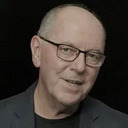Never be afraid to hang your art on the wall© — Copyright Greg Twemlow
A Google search on Tuesday, June 6th, 2023, confirms that I am the only person who has used the phrase, and I have claimed Copyright ownership.
A guide for parents who want to encourage their child’s creative spirit.
In the 21st century, the primary differentiator between humans and Artificial Intelligence/Machine Learning systems is the skill of creativity. Creative thinking must be encouraged and celebrated throughout our lives from a young age.
Supporting creativity from an early age and throughout life has to start with parents, yet very few parents understand how they can be their child’s Creative Muse.
One of the broadly agreed failings of education is that it does little to awaken, develop and foster these powers of creativity.
Many parents know the importance of creative skills but lack the knowledge and personal experience to mentor their kids’ creativity effectively.
It’s not so much creative teaching as appreciating how being your child’s Muse is the most effective method of developing creative kids.
Parents can set up a creative kid learning center in the family home. This is, in fact, a critical enabling component of ensuring your personal Creativity program achieves the desired outcomes where you and your child discover that to be creative, there has to be an element of bravery, learning together “to never be afraid to hang your art on the wall”.
Parent’s Role
Parents play a dual role in supporting creativity. Their primary role is to learn alongside children. Parents must always carefully observe and track their children's growth. Parents also reflect on what they have learned about themselves and their roles.
Some form of documentation of the child’s and the parent’s personal growth helps understand the changes that develop over time. Photos of children at work and play and dictations of their experiences help learn more about what does and does not work for a child.
These principles and beliefs combine to make your creativity room an exciting and highly effective method of expanding children’s minds — one adventure at a time.
Encouraging Creativity
When considering young children, it is appropriate to adopt what Sir Ken Robinson calls a democratic definition of creativity. In this way, every child can be considered a creative potential capable of creative expression. Each child’s creative abilities must be related to his/her stage of development.
For example, a young child’s work may be adaptive and original for that particular child. Another suggestion for adapting the notion of creativity to suit young children is to put the emphasis on the creative process and never judge the quality of what they produce.
Likely, a young child may have yet to develop all the skills needed to achieve an excellent creative outcome. We’re not seeking superlative outcomes; we’re seeking confirmation that the child is thoughtfully creating and can explain the story of their art.
L. Malaguzzi, says in his 1993 book, “‘History, ideas, and basic philosophy”: “Creativity becomes more visible when adults try to be more attentive to the cognitive processes of children than to the results they achieve in various fields of doing and understanding.”
Celebrating Creativity
Celebrating is crucial in enabling your child to appreciate the impact of their creative output, no matter how rudimentary.
Your role as their Muse must always be subtle and gently probing with questions that engage and prompt deeper thinking.
But it’s not just parents and the child involved in celebrating.
Close family and possibly friends will play an essential role in this process.
The child’s pride in their work needs to be shared and appreciated by a wider audience, although, at first, that might be with Grandma or Grandpa.
Apart from praise from a grandparent, the child should know that her art has inspired Grandma to make art. This brings the child into the creative process by appreciating Grandma’s creativity and knowing that her grandchild’s creative efforts inspired Grandma.
The goal is to teach your child to “never be afraid to hang her art on the wall”.
This is something that almost everyone in Western society fears once they get to around the age of 10.
One of the most important behaviors a child can learn is the resilience to “never be afraid to hang your art on the wall©.”
About the author: Greg Twemlow, Founder of XperientialAI©.
Greg Twemlow: “Empowering future leaders and organizations by designing and delivering AI-integrated experiential learning programs that blend technology, ethics, and philosophy. Through consultancy, mentorship, innovation coaching, and thought leadership, I help CEOs, business leaders, and individuals ethically and efficiently implement AI solutions while fostering a culture of trust, integrity, and wisdom in an AI-driven world.” Contact Greg: greg@xperiential.ai
A Google search on Tuesday, June 6th, 2023, confirms that I am the only person who has used the phrase, and I have claimed Copyright ownership.
